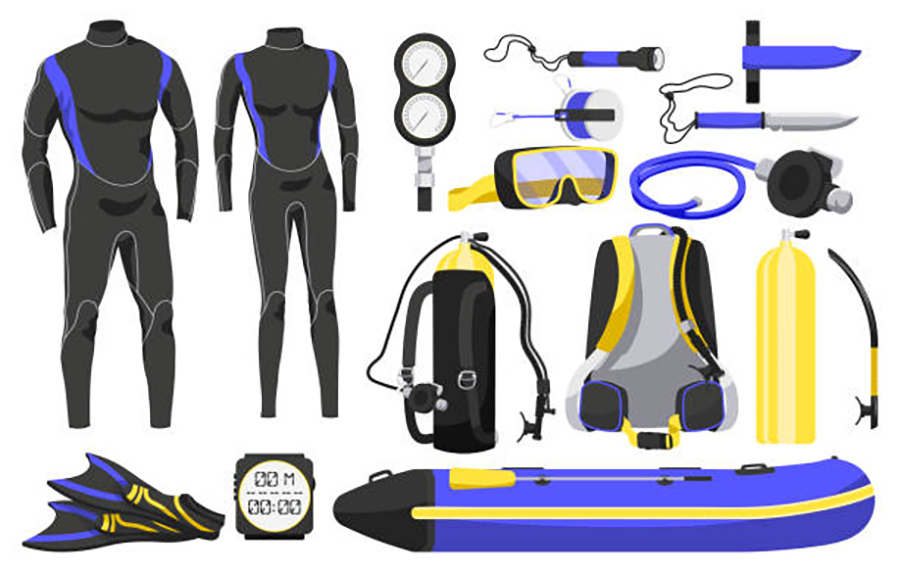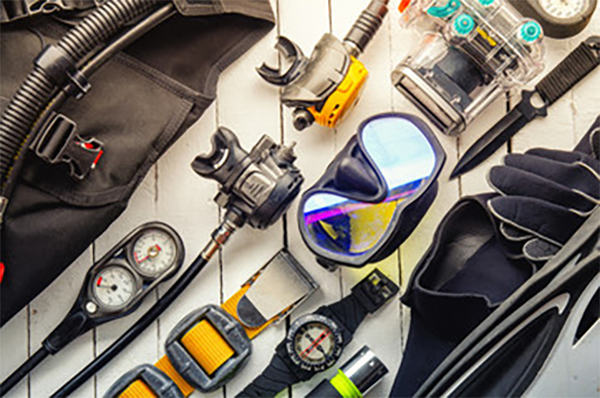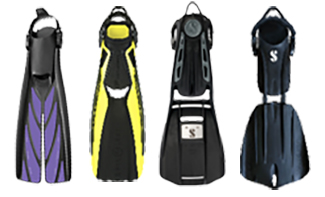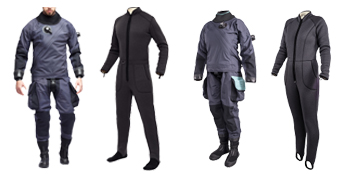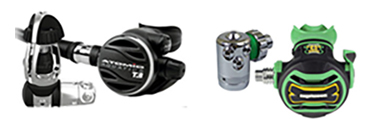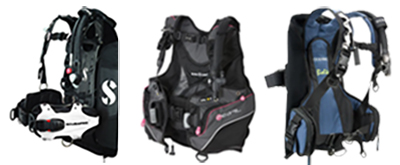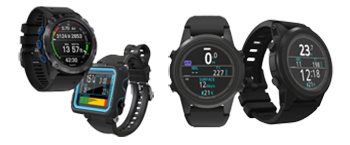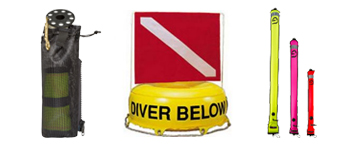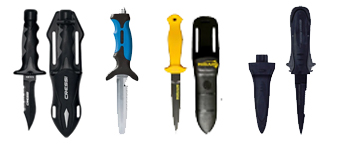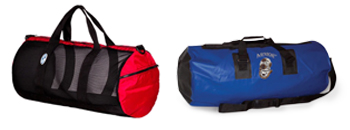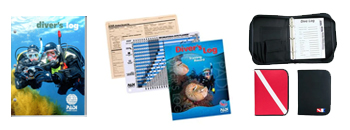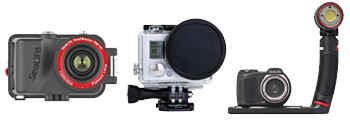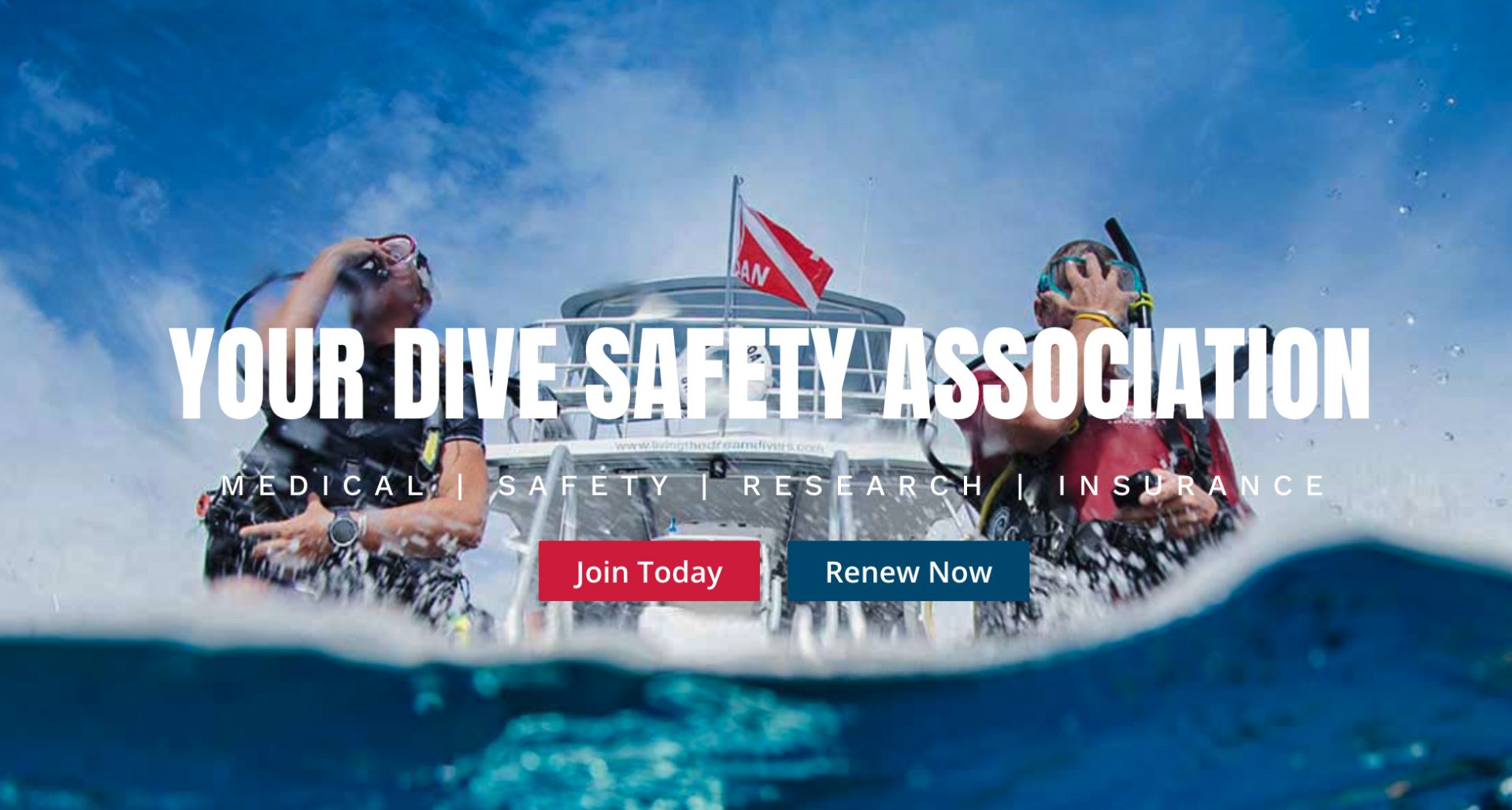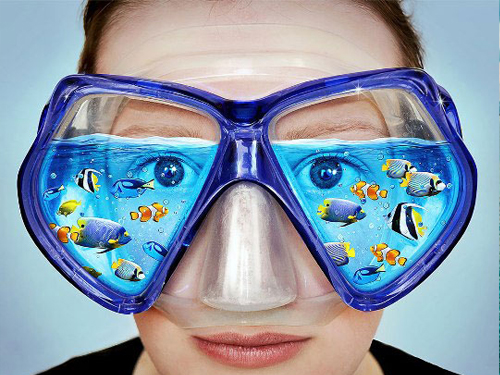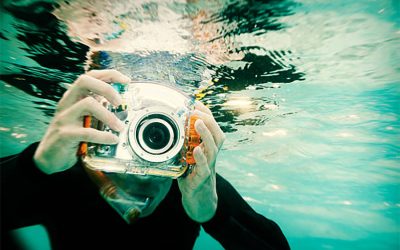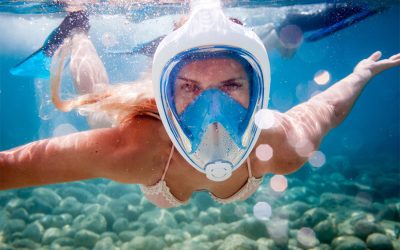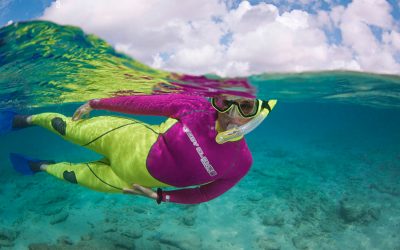Diving Equipment List: Your Guide to Gearing Up for a Safe and Fun Dive
This site uses affiliate links which may earn a commission at no additional cost to you
Diving Equipment List - Here's What You'll Learn
In this article about the diving equipment list, you will gain a comprehensive understanding of the essential gear required for safe and enjoyable underwater exploration.
What Is The Essential Gear Every Diver Needs?
Imagine exploring an alien world, weightless and surrounded by vibrant colors and otherworldly creatures. That’s the magic of diving, but just like any spacewalk, you need the right tools to survive and thrive. The essential gear for divers isn’t just about brands or models; it’s about having a reliable system that keeps you safe, comfortable, and connected to the underwater world.
Remember, diving is an adventure, but safety is paramount. Having the essential gear isn’t just about comfort; it’s about having the tools you need to make informed decisions, handle emergencies, and surface safely.
It’s your underwater lifeline, allowing you to explore with confidence and create memories that last a lifetime. So, before you take the plunge, invest in the right gear – not just the coolest gadgets, but the essential pieces that empower you to dive safely and truly embrace the magic of the underwater world.
1. Mask, Snorkel, Fins
Exploring the underwater world is an exhilarating experience, and having the right scuba mask is essential for a safe and enjoyable dive. From the different types available to the importance of proper fit and seal, understanding the nuances of scuba masks is crucial for every diver.
Below, we delve into the various types of masks and why achieving a proper fit and seal is paramount.
Types of Masks:
1. Single Lens Masks:
- Characterized by a single lens spanning across both eyes, providing a wide field of vision.
- Popular among recreational divers for their simplicity and unobstructed view.
- May have a lower internal volume, making them easier to clear and equalize.
2. Dual Lens Masks:
- Feature two separate lenses, each covering one eye.
- Often preferred by divers who require prescription lenses, as they can accommodate different prescriptions for each eye.
- Some divers find dual lens masks offer better depth perception compared to single lens designs.
3. Full Face Masks:
- Cover the entire face, integrating the mask and snorkel into a single unit.
- Provide a more natural breathing experience, allowing divers to breathe through their nose and mouth.
- Offer enhanced visibility and communication options, making them popular for certain types of diving such as snorkeling and underwater photography
Proper Fit and Seal Importance:
- A proper fit is paramount for comfort, visibility, and safety underwater.
- The mask should create a seal against the diver’s face without causing discomfort or pressure points.
- To achieve a proper fit:
- Ensure the mask skirt conforms to the contours of the face, especially around the nose and cheeks.
- Adjust the strap to achieve a snug yet comfortable fit, preventing water from seeping in.
- Conduct a “mask seal test” by inhaling gently through the nose to check for any leaks; the mask should remain in place without air escaping.
- A good seal prevents water from entering the mask, minimizing the risk of discomfort, fogging, and potential mask clearing issues during the dive.
- Regular maintenance, including proper cleaning and storage, helps preserve the mask’s seal and longevity.
Selecting the right scuba mask and ensuring a proper fit and seal are vital steps for every diver. Whether opting for a single lens, dual lens, or full-face design, understanding the characteristics and functionalities of each type is essential.
By prioritizing comfort, visibility, and safety, divers can fully immerse themselves in the wonders of the underwater world with confidence and peace of mind.
A fundamental piece of snorkeling and scuba diving equipment, the snorkel plays a vital role in facilitating surface breathing and clearing water from the airway. With various types and features available, understanding the nuances of snorkels is crucial for a seamless underwater experience.
Below, we explore the different types of snorkels, their purposes, key features, and essential considerations for choosing the right one.
Types of Snorkels:
1. Classic J-shaped Snorkel:
- Features a traditional design with a simple J-shaped tube.
- Time-tested and reliable, offering a straightforward breathing experience at the surface.
- Suitable for recreational snorkeling and diving in calm waters.
2. Dry Top Snorkel:
- Equipped with a specialized valve at the top that automatically seals to prevent water from entering the tube when submerged.
- Ideal for choppy waters or snorkeling in waves, minimizing the need for clearing water from the snorkel.
- Offers enhanced comfort and ease of breathing by reducing the risk of inhaling water.
3. Snorkel with Purge Valve:
- Includes a purge valve at the bottom of the snorkel tube, allowing for effortless clearing of water.
- Enables divers to expel water with a quick exhalation, maintaining clear airflow without the need for forceful blowing.
- Particularly beneficial for divers who frequently encounter water ingress or prefer a hassle-free clearing process
Purpose and Features:
- Allows Breathing at the Surface:
- The primary function of a snorkel is to enable divers to breathe comfortably while floating at the surface, conserving energy and air supply.
- Clears Water from Snorkel:
- In the event of water entering the snorkel tube, certain features such as a purge valve or dry top prevent water from reaching the diver’s mouth, facilitating efficient clearing.
- Comfortable Mouthpiece:
- Snorkels often feature a soft, ergonomic mouthpiece designed for prolonged use without causing discomfort or jaw fatigue.
- Splash Guard:
- Some snorkels incorporate a splash guard or splash-proof design to minimize water entry during surface swimming or in rough conditions.
- Purge Valve for Easy Clearing:
- Snorkels equipped with a purge valve offer a convenient mechanism for clearing water from the tube, enhancing diver comfort and convenience.
Considerations:
- Comfort: Choose a snorkel with a mouthpiece that feels comfortable and fits securely without causing irritation.
- Splash Guard: Consider snorkels with effective splash guards if snorkeling in rough or choppy waters to reduce water ingress.
- Purge Valve: Opt for snorkels with a purge valve if easy clearing of water is a priority, especially during extended dives or in conditions prone to water entry.
Selecting the right snorkel is essential for a comfortable and enjoyable snorkeling or diving experience. Whether opting for a classic J-shaped snorkel, a dry top design, or a snorkel with a purge valve, understanding the purpose and features of each type allows divers to make informed choices based on their preferences and diving conditions.
Scuba fins are indispensable tools for divers, providing propulsion and maneuverability underwater. With various styles and features available, selecting the right fins can significantly impact comfort, efficiency, and overall diving experience.
Below we delve into the different fin styles, including open heel and full foot designs, and discuss considerations for choosing the appropriate size and stiffness for optimal performance.
Different Fin Styles:
1. Open Heel Fins:
- Designed with an adjustable strap that wraps around the back of the diver’s heel, secured with a buckle or quick-release mechanism.
- Ideal for use with dive boots, providing versatility and the ability to adjust the fit for different foot sizes and thicknesses of neoprene boots.
- Commonly preferred by scuba divers for their adaptability and suitability for varying diving conditions.
2. Full Foot Fins:
- Feature a foot pocket that encloses the entire foot, similar to a shoe, without the need for additional dive boots.
- Lightweight and streamlined, offering enhanced agility and maneuverability, particularly in warm-water diving environments.
- Well-suited for snorkeling, freediving, and travel due to their compact size and simplicity
Choosing the Right Size and Stiffness:
- Size:
- Proper sizing is crucial for comfort, performance, and preventing discomfort or injury.
- Choose fins that fit snugly without being too tight or causing pressure points on the foot.
- Ensure the foot pocket accommodates the shape and size of the diver’s foot, with minimal excess space to prevent slippage.
- Stiffness:
- The stiffness of fins affects propulsion efficiency and maneuverability underwater.
- Stiffer fins provide greater power and propulsion with each kick but may require more effort to maneuver, especially for less experienced divers.
- Softer fins offer increased flexibility and ease of movement, suitable for divers who prioritize comfort and energy conservation over maximum propulsion.
Considerations for Comfort and Efficiency:
- Comfort:
- Look for fins with ergonomic foot pockets and features such as padded straps or heel cushions to minimize discomfort during prolonged use.
- Consider personal preferences and any specific foot conditions or sensitivities that may affect comfort underwater.
- Efficiency:
- Balance stiffness and flexibility according to diving conditions and individual preferences.
- Test different fin styles and stiffness levels to determine the optimal combination for propulsion efficiency and maneuverability.
- Consider factors such as water visibility, current strength, and dive objectives when selecting fins for a particular dive.
Scuba fins play a crucial role in propulsion, maneuverability, and overall diving performance. Whether opting for open heel fins with adjustable straps or full foot fins for streamlined simplicity, choosing the right size and stiffness is essential for comfort and efficiency underwater.
2. Scuba Exposure Protection
A reliable wetsuit is a diver’s best ally, providing warmth, protection, and comfort while exploring the underwater world. With various thickness options, material types, and additional features available, choosing the right wetsuit is crucial for ensuring a safe and enjoyable dive.
Below, we explore the different aspects of scuba wetsuits, including thickness options tailored to water temperature, material types, and essential features for comfort and durability.
Thickness Options:
1. 3mm Wetsuits:
- Ideal for tropical waters and warm climates where water temperatures remain relatively high.
- Provides sufficient insulation against mild temperature fluctuations while maintaining flexibility and mobility.
- Suitable for diving in environments with water temperatures above 75°F (24°C).
2. 5mm Wetsuits:
- Designed for temperate waters and moderate climates with cooler water temperatures.
- Offers increased thermal protection compared to 3mm wetsuits, suitable for diving in waters ranging from 60°F to 75°F (16°C to 24°C).
- Balances warmth and flexibility for extended dives in varying conditions.
3. 7mm Wetsuits:
- Suited for cold-water diving environments with consistently low water temperatures.
- Provides maximum insulation and warmth, essential for diving in waters below 60°F (16°C).
- Features thicker neoprene material to trap body heat and minimize heat loss during prolonged dives
Material Types:
1. Neoprene:
- Traditional wetsuit material known for its insulating properties and flexibility.
- Available in various thicknesses and grades, offering options for different diving conditions and personal preferences.
- Provides excellent thermal protection and abrasion resistance, ideal for recreational and professional divers alike.
2. Compressed Neoprene:
- Utilizes a denser neoprene material that offers enhanced warmth and durability compared to standard neoprene.
- Provides additional buoyancy and compression resistance, reducing the effects of water pressure at depth.
- Well-suited for cold-water diving and technical diving applications where extended exposure to cold temperatures is expected.
3. Tri-laminate:
- Consists of multiple layers of synthetic materials bonded together to create a lightweight and flexible wetsuit.
- Offers excellent thermal protection and abrasion resistance while minimizing bulk and weight.
- Commonly used in drysuits and semi-drysuits for advanced diving applications
Additional Features:
- Seals: Wrist, ankle, and neck seals prevent water ingress and help maintain body heat inside the wetsuit.
- Zippers: High-quality, corrosion-resistant zippers facilitate easy donning and doffing of the wetsuit, enhancing convenience for divers.
- Knee Pads and Reinforced Areas: Durable knee pads and reinforced panels on high-wear areas increase longevity and protection against abrasions and punctures.
Choosing the right scuba wetsuit is essential for comfort, warmth, and protection during underwater adventures. Whether diving in tropical, temperate, or cold-water environments, selecting the appropriate thickness, material type, and additional features ensures optimal performance and enjoyment.
Drysuits are essential gear for divers exploring cold water environments, providing insulation and protection against the elements. Understanding the different types of drysuits, such as neoprene and membrane variations, as well as the importance of undergarments and proper maintenance, is crucial for maximizing comfort and safety.
Below, we delve into the intricacies of drysuit types and maintenance practices to ensure optimal performance and longevity.
Types of Drysuits:
1. Neoprene Drysuits:
- Constructed from thick neoprene material, similar to wetsuits, offering excellent thermal insulation.
- Provide inherent buoyancy, making them suitable for recreational diving without the need for additional weights.
- Preferred for their durability and abrasion resistance, especially in harsh underwater conditions.
2. Membrane Drysuits:
- Consist of thin, waterproof materials such as trilaminate or crushed neoprene.
- Offer greater flexibility and reduced bulk compared to neoprene suits, allowing for enhanced mobility.
- Commonly used in technical diving and professional applications where agility and streamlined design are paramount
Undergarments for Thermal Insulation:
- Undergarments play a vital role in enhancing warmth and comfort while diving in cold water conditions.
- Options include:
- Thermal base layers: Moisture-wicking materials that retain body heat and regulate temperature.
- Insulating mid-layers: Fleece or wool garments that provide additional warmth without bulk.
- Drysuit undersuits: Specifically designed for drysuit diving, offering insulation and moisture management.
Maintenance of Drysuits:
- Proper Storage:
- Rinse the drysuit thoroughly with fresh water after each dive to remove salt, sand, and other debris.
- Allow the suit to air dry inside out in a shaded area away from direct sunlight to prevent deterioration of materials.
- Store the drysuit flat or on a wide hanger to maintain its shape and prevent creasing.
- Zipper Care:
- Regularly lubricate drysuit zippers with silicone-based lubricant to ensure smooth operation and prevent corrosion.
- Avoid forcing or overextending zippers, as this may damage the teeth or slider mechanism.
- Seal Checks:
- Inspect wrist, ankle, and neck seals for signs of wear, tears, or deterioration before each dive.
- Test the integrity of seals by gently pulling on them to ensure a snug fit without excessive stretching.
3. Scuba Breathing Aparatus
Scuba regulators are the lifeline of every diver, providing a constant supply of air while exploring the underwater world. Understanding the various components, environmental considerations, and servicing requirements of regulators is essential for safe and enjoyable diving experiences.
Below, we delve into the intricacies of scuba regulators, from their fundamental components to adapting to different environmental conditions and ensuring proper maintenance for reliability.
Components of Scuba Regulators:
1. First Stage:
- Attaches to the scuba tank and reduces the high-pressure air to an intermediate pressure.
- Typically features multiple ports for connecting hoses to deliver air to the diver’s second stage, alternate air source, and pressure gauge.
- May include environmental sealing to prevent freezing in cold water conditions.
2. Second Stage:
- Connects to the first stage via a hose and delivers air to the diver on demand.
- Features a mouthpiece, diaphragm, and demand valve mechanism to regulate airflow based on diver inhalation.
- Often includes adjustable controls for breathing resistance and sensitivity.
3. Alternate Air Source:
- A secondary regulator connected to the first stage via a separate hose.
- Used in emergency situations to provide air to a buddy in need or as a backup for the primary second stage.
- Can be integrated into the buoyancy compensator or worn on a necklace for quick access.
4. Gauges:
- Typically includes a submersible pressure gauge (SPG) to monitor tank pressure and a depth gauge or dive computer to track depth and dive time.
- Essential for monitoring air consumption and dive parameters throughout the dive
Environmental Considerations:
- Cold Water:
- Regulators designed for cold water diving feature environmental sealing and thermal insulation to prevent freezing of internal components.
- Dry or environmentally sealed first stages are preferred to minimize the risk of ice formation.
- High Flow:
- Some regulators are optimized for high-flow conditions, such as strong currents or deep dives, with larger diaphragms and exhaust valves for enhanced performance.
- Adjustable controls allow divers to customize breathing resistance to suit their preferences and diving conditions.
- Depth Limitations:
- Regulators are rated for specific depth limits based on their design and performance characteristics.
- Technical divers may require specialized regulators capable of handling greater depths and pressures beyond recreational limits.
Servicing of Scuba Regulators:
- Annual Maintenance:
- Regulators should undergo annual servicing by a certified technician to ensure proper function and safety.
- Servicing typically involves disassembly, cleaning, inspection, lubrication, and adjustment of internal components.
- Parts Replacement:
- Worn or damaged parts, such as O-rings, diaphragms, and valves, should be replaced as needed to maintain optimal performance.
- Genuine manufacturer parts are recommended to ensure compatibility and reliability.
- Adjustment:
- Regulators may require adjustment of breathing resistance, inhalation effort, and purge valve sensitivity to meet diver preferences and regulatory standards.
- These adjustments should be performed by qualified technicians using specialized tools and equipment.
The buoyancy compensator (BC) is a diver’s best friend, providing control and stability underwater. With various types, features, and adjustment techniques available, understanding the nuances of BCs is crucial for achieving optimal buoyancy and comfort while diving.
Below, we explore the different types of BCs, their key features, and proper adjustment methods for mastering buoyancy control.
Types of Buoyancy Compensators:
1. Jacket Style BCs:
- Traditional design resembling a vest worn around the diver’s torso.
- Provides buoyancy around the diver’s entire torso, offering stability and surface flotation.
- Ideal for recreational divers and beginners due to their simplicity and ease of use.
2. Back Inflation BCs:
- Feature a streamlined design with buoyancy located primarily on the diver’s back.
- Offers greater freedom of movement and reduced drag underwater, promoting efficient swimming.
- Preferred by technical divers and experienced enthusiasts for their trim and hydrodynamic profile.
3. Hybrid Designs:
- Combine elements of both jacket style and back inflation BCs for versatility and performance.
- Provide buoyancy around the torso while minimizing bulk and drag, offering the best of both worlds.
- Suitable for divers seeking a balanced combination of stability, comfort, and streamlined design.
-
Key Features of Buoyancy Compensators:
- Integrated Weight System:
- Allows divers to carry and release weights effortlessly, promoting streamlined buoyancy control and trim.
- Dump Valves:
- Enable quick and controlled release of excess air from the BC to adjust buoyancy and maintain desired depth.
- Low-Profile Inflator:
- Provides easy access to inflate and deflate the BC with minimal effort, enhancing convenience and efficiency underwater.
- Durable Construction:
- Made from rugged materials such as nylon or Cordura to withstand the rigors of diving and prolonged exposure to saltwater.
Proper Adjustment Techniques:
- Achieving Neutral Buoyancy:
- Fine-tune the amount of air in the BC to achieve neutral buoyancy, where the diver neither sinks nor floats.
- Practice controlled breathing and small adjustments to maintain a stable depth and position in the water column.
- Trim:
- Adjust weight distribution and body position to achieve horizontal trim, minimizing drag and promoting efficient swimming.
- Proper trim enhances hydrodynamics and reduces energy consumption during dives.
- Comfort:
- Ensure the BC straps are adjusted snugly but comfortably to prevent shifting or movement while diving.
- Experiment with different adjustments and configurations to find the optimal fit for your body shape and diving style.
Scuba tanks are the cornerstone of underwater exploration, providing divers with the essential air supply needed to breathe beneath the surface. Understanding the various sizes, materials, and filling options available for scuba tanks is essential for divers to make informed decisions based on their diving preferences and requirements.
Below, we delve into the intricacies of scuba tanks, exploring their different sizes, materials, and filling options.
Different Sizes of Scuba Tanks:
1. Standard Aluminum Tanks:
- Commonly used in recreational diving, available in various sizes ranging from 80 cubic feet (cf) to 100 cf.
- Offer a good balance of buoyancy characteristics and gas capacity for most diving situations.
- Preferred for their affordability, durability, and widespread availability.
2. High Capacity Steel Tanks:
- Feature a higher gas capacity compared to aluminum tanks, typically ranging from 100 cf to 130 cf.
- Provide extended dive times for divers requiring greater gas reserves, such as technical divers or those exploring deeper depths.
- Offer a more negative buoyancy compared to aluminum tanks, requiring additional weight to achieve proper buoyancy.
3. Pony or Spare Air Tanks:
- Compact tanks with capacities ranging from 6 cf to 30 cf, primarily used as emergency backup air supplies.
- Attached to the primary scuba tank or worn as a separate cylinder, providing a supplementary air source in case of an emergency or out-of-air situation.
- Ideal for safety-conscious divers and those engaging in technical or overhead environment diving
Materials of Scuba Tanks:
1. Aluminum Tanks:
- Lightweight and corrosion-resistant, making them ideal for recreational diving.
- Available in various alloys and thicknesses to meet different diving needs and regulatory standards.
- Require visual inspection and hydrostatic testing at regular intervals to ensure safety and integrity.
2. Steel Tanks:
- Durable and capable of withstanding higher pressures compared to aluminum tanks.
- Offer greater gas capacity in a smaller profile, providing advantages for technical diving and extended range dives.
- Prone to corrosion if not properly maintained, requiring regular inspection and servicing.
- Filling Options for Scuba Tanks:
Air:
- The most common filling option, consisting of compressed atmospheric air filtered and dried to remove contaminants.
- Suitable for recreational diving within no-decompression limits (NDLs) and moderate depths.
- Widely available at dive shops and fill stations worldwide.
-
2. Nitrox (Enriched Air):
- Contains a higher percentage of oxygen compared to standard air, typically ranging from 22% to 40% oxygen.
- Extends bottom times and reduces nitrogen absorption, offering benefits for repetitive diving and decompression diving.
- Requires specialized training and equipment for handling and analyzing gas mixtures.
3. Trimix:
- A blend of oxygen, nitrogen, and helium tailored for deep diving beyond recreational limits.
- Reduces narcosis and oxygen toxicity at extreme depths, allowing divers to safely explore deep wrecks and caves.
- Reserved for technical divers with advanced training and experience in mixed gas diving.
Achieving proper buoyancy is essential for safe and enjoyable scuba diving. Scuba weights play a crucial role in helping divers achieve neutral buoyancy underwater. Understanding how to calculate weight requirements and distribute weights safely is vital for every diver.
Below, we delve into the intricacies of scuba weights and weight systems, providing guidance on calculating weight requirements and achieving balanced distribution for optimal buoyancy control.
Weights and Weight Systems:
1. Calculating Weight Requirements:
- Factors influencing weight requirements include body composition, equipment configuration, exposure suit buoyancy, and water conditions.
- Conducting a buoyancy check in confined water helps determine the amount of weight needed to achieve neutral buoyancy at the surface with a nearly empty tank.
- Adjustments may be necessary based on changes in equipment, diving conditions, and experience level.
2. Safe Distribution of Weights:
- Distributing weights evenly on the diver’s body helps maintain balance and stability underwater.
- Common weight placement options include weight belts, integrated weight pockets on buoyancy compensators (BCs), ankle weights, and trim weights.
- Avoid placing excessive weight on the weight belt, as it can cause discomfort or strain on the lower back.
- Utilize trim weights to achieve proper horizontal trim and reduce the need for excessive adjustments to buoyancy control devices
Tips for Safe and Effective Weight Distribution:
- Start with a conservative amount of weight and gradually adjust based on buoyancy checks and diving experience.
- Experiment with different weight placement options to find the most comfortable and effective configuration.
- Avoid relying solely on weights for buoyancy control; use proper breathing techniques and equipment adjustments to fine-tune buoyancy.
- Consider the addition of ankle weights or trim weights to achieve optimal trim and streamline the diver’s profile underwater.
- Regularly reassess weight requirements and distribution to accommodate changes in equipment, exposure suits, and diving conditions.
4. Scuba Safety Equipment
Scuba dive computers are indispensable tools for modern divers, providing essential information and calculations for safe and enjoyable underwater exploration. With various types and advanced features available, understanding the functionalities of dive computers is crucial for every diver.
Below, we delve into the different types of dive computers, their functions, and advanced features to enhance the diving experience.
Types of Dive Computers:
1. Wrist-mounted Dive Computers:
- Worn on the wrist like a watch, offering convenience and ease of access to critical dive information.
- Feature a compact design with an intuitive interface for quick navigation underwater.
- Preferred by recreational divers for their portability and versatility.
2. Console Dive Computers:
- Integrated into a dive console along with other gauges such as a pressure gauge and compass.
- Provide a comprehensive dive information display in a single unit, ideal for divers who prefer a traditional setup.
- Commonly used by divers who require additional gauges for technical or professional diving
3. Watch-style Dive Computers:
- Designed to resemble traditional wristwatches, offering a discreet and stylish option for everyday wear.
- Provide basic dive information and functionality while doubling as a fashionable accessory on land.
- Suitable for recreational divers who prefer a multifunctional device for both diving and daily activities
Functions of Dive Computers:
- Dive Planning:
- Allow divers to plan dives by calculating maximum dive times, no-decompression limits, and safety stop requirements based on dive profiles.
Depth and Time Monitoring:
- Continuously monitor depth and bottom time during dives to ensure adherence to safe diving limits and prevent decompression sickness.
Decompression Calculations:
- Calculate decompression requirements based on nitrogen absorption and off-gassing during ascent, optimizing dive safety and efficiency.
Advanced Features of Dive Computers:
- Nitrox Compatibility:
- Support for enriched air nitrox diving, allowing divers to safely extend bottom times and reduce nitrogen exposure.
- Air Integration:
- Integrate with a wireless transmitter to provide real-time air pressure and remaining bottom time information directly on the dive computer display.
- Dive Log Capabilities:
- Record and store dive data, including dive profiles, maximum depths, and dive times, for later analysis and review.
- Algorithm Adjustability:
- Allow divers to customize decompression algorithms and conservatism settings to match personal preferences and diving conditions.
Scuba lights are indispensable tools for divers, illuminating the underwater world and enhancing visibility in dark or low-light conditions. With various types and characteristics available, understanding the nuances of scuba lights is essential for divers to choose the right equipment for their diving needs.
Below, we explore the different types of scuba lights, their characteristics, and applications in underwater exploration.
Types of Scuba Lights:
1. Handheld Lights:
- Compact and portable lights held by the diver during the dive.
- Offer flexibility and maneuverability for illuminating specific areas or objects underwater.
- Ideal for recreational divers, underwater photographers, and night divers seeking versatile lighting options.
2. Canister Lights:
- Feature a light head connected to a separate battery canister via a cable.
- Provide longer burn times and higher output compared to handheld lights, suitable for extended dives or technical diving.
- Commonly used by cave divers, wreck divers, and technical divers exploring deep or dark environments.
3. Primary Lights:
- High-powered lights designed as the primary source of illumination for dives.
- Offer maximum brightness and beam reach for illuminating large areas or distant objects underwater.
- Essential for night diving, cave diving, and deep diving where visibility is limited.
4. Backup Lights:
- Compact, lightweight lights carried as a backup in case of primary light failure.
- Serve as emergency lights for signaling, navigation, or providing temporary illumination during equipment malfunctions.
- Often attached to the diver’s harness or carried in a pocket for quick access
Characteristics of Scuba Lights:
- Lumens Output:
- Indicates the brightness or intensity of the light beam, with higher lumens corresponding to brighter output.
- Primary lights typically have higher lumens output for greater visibility in dark or murky waters.
- Beam Angle:
- Refers to the spread of light emitted by the scuba light, ranging from narrow spot beams to wide flood beams.
- Narrow beams offer focused illumination for long-distance visibility, while wide beams provide broad coverage for close-range tasks.
- Battery Type:
- Scuba lights may use rechargeable or disposable batteries, each with its advantages and considerations.
- Rechargeable batteries offer cost savings and environmental benefits but require access to charging facilities.
- Disposable batteries provide convenience and reliability but result in ongoing replacement costs and environmental impact.
Applications of Scuba Lights:
- Night Diving:
- Essential for navigating and illuminating the underwater environment during night dives.
- Enhance safety and visibility for divers exploring reefs, wrecks, and marine life after dark.
- Wreck Exploration:
- Aid in exploring and documenting submerged wrecks by illuminating intricate features and passageways.
- Provide critical visibility for navigating tight spaces and potential hazards within wreck structures.
- Underwater Photography/Videography:
- Serve as primary or secondary light sources for capturing vivid images and footage of marine life and underwater landscapes.
- Illuminate subjects and enhance colors for stunning visual effects in underwater photography and videography.
Surface signaling is a critical aspect of scuba diving safety, facilitating communication with dive buddies, boats, and signaling for assistance when needed. Understanding the importance of surface signaling, various signaling devices, and deployment techniques is essential for every diver.
Below, we explore the significance of surface signaling, different signaling devices available, and the proper deployment techniques for effective communication and safety at the surface.
Importance of Surface Signaling:
1. Communication with Dive Buddy and Boat:
- Enables divers to maintain contact with their dive buddy and communicate important information such as air supply, dive status, and navigation directions.
- Facilitates coordination with boat operators for pick-up, drop-off, and emergency situations, enhancing dive safety and efficiency.
2. Signaling for Assistance:
- Provides a means for divers to attract attention and request assistance in case of emergencies, equipment malfunctions, or diver distress at the surface.
- Essential for summoning help from nearby boats, other dive groups, or shore personnel in situations requiring immediate attention or evacuation
Devices for Surface Signaling:
1. Surface Marker Buoys (SMBs):
- Inflatable buoys deployed from underwater to the surface to indicate diver presence and location.
- Offer high visibility with bright colors or reflective strips, aiding in visual detection from boats or shore.
- Available in various sizes and styles, including open-ended SMBs for controlled ascents and closed SMBs for surface signaling.
2. Audible Signaling Devices:
- Whistles and air horns produce loud, distinctive sounds to attract attention and communicate with nearby divers or boats.
- Serve as supplementary signaling devices in situations where visual signaling may be limited or ineffective, such as low visibility conditions or crowded dive sites
Deployment Techniques for Surface Signaling:
1. Controlled Ascent with SMB:
- Deploy the SMB from a depth of approximately 15-20 feet (5-6 meters) during the safety stop or upon reaching the safety stop depth.
- Inflate the SMB using the regulator’s alternate air source or a low-pressure inflator hose, ensuring a steady ascent while maintaining buoyancy control.
- Maintain visual contact with the SMB throughout the ascent, adjusting buoyancy and ascent rate as needed to prevent rapid ascents or entanglements.
2. Signaling Protocols:
- Establish clear signaling protocols with dive buddies and boat operators before the dive, including predetermined signals for ascent, emergency situations, and assistance requests.
- Use standardized hand signals, audible cues, or prearranged communication methods to convey messages effectively and minimize confusion
5. Scuba Optional Accessories
Scuba knives are essential tools for divers, providing a means to cut through entanglements, remove marine debris, and assist in emergency situations underwater. Understanding the various considerations, including blade material and sheath type, as well as safety and legal aspects, is crucial for every diver.
Below, we explore the factors to consider when choosing a scuba knife and the importance of safety and adherence to local regulations.
Considerations for Scuba Knives:
1. Blade Material:
- Stainless Steel: Offers durability, corrosion resistance, and affordability. Ideal for general-purpose diving tasks.
- Titanium: Provides exceptional strength and corrosion resistance, making it suitable for harsh marine environments. Lightweight and non-magnetic, but more expensive than stainless steel
2. Sheath Type:
- Leg Sheath: Attaches to the diver’s leg for quick and easy access. Offers convenient deployment but may cause drag and hinder movement if improperly secured.
- Arm Sheath: Worn on the forearm for accessibility and streamlined profile. Ideal for divers who prefer a hands-free option or have limited space on their BCD.
- BCD Sheath: Attached to the buoyancy compensator (BCD) for integrated storage and accessibility. Helps reduce clutter and maintain balance, but may be less accessible in emergency situations
Safety and Legal Aspects of Scuba Knives:
1. Proper Handling:
- Handle with care to avoid injury to yourself and others. Always keep the blade pointed away from the body and handle with a firm grip.
- Use caution when deploying and stowing the knife to prevent accidental cuts or entanglements.
- Avoid using the knife as a weapon and exercise restraint in challenging situations to prevent escalation.
2. Legal Considerations:
- Familiarize yourself with local regulations regarding the carrying and use of scuba knives. Some areas may have restrictions on blade length or type of knife allowed.
- Ensure compliance with transportation regulations when traveling with a scuba knife, especially when flying or crossing international borders.
- Respect marine conservation laws and guidelines when using the knife underwater, avoiding damage to coral reefs or marine life
Safety Practices for Scuba Knife Use:
- Regularly inspect the knife for damage, corrosion, or dullness, and maintain sharpness as needed.
- Practice proper knife-handling techniques and familiarize yourself with emergency procedures for deploying the knife underwater.
- Consider completing a scuba diving specialty course on underwater navigation and safety, including training in knife use and underwater emergencies.
Scuba compasses are indispensable tools for underwater navigation, providing divers with the means to maintain direction, navigate to specific locations, and return safely to their starting point. Understanding the features, functions, and proper use of scuba compasses is essential for divers of all skill levels.
Below, we explore the intricacies of scuba compasses, from their components and features to techniques for effective underwater navigation.
Components and Features of Scuba Compasses:
1. Housing:
- Typically made of durable materials such as plastic or metal to withstand underwater conditions.
- Sealed and waterproof to prevent water intrusion and maintain functionality at depth.
2. Compass Card:
- Displays directional headings, typically marked in 10-degree increments, allowing divers to orient themselves underwater.
- Features a lubber line or index marker indicating the direction of travel relative to the diver’s orientation.
3. Rotating Bezel:
- Rotates independently of the compass card and is used for setting and maintaining headings.
- Graduated with degrees or cardinal directions (N, S, E, W) for precise navigation and course plotting.
4. Magnification Window:
- Provides a magnified view of the compass card for enhanced readability and accuracy, especially in low visibility conditions.
5. Luminescent Markings:
- Glow-in-the-dark or illuminated markings on the compass card and bezel for improved visibility in low light or night diving situations.
Techniques for Effective Underwater Navigation:
1. Setting a Heading:
- Orient the compass in the desired direction of travel, aligning the lubber line with the intended heading on the compass card.
- Rotate the bezel to match the lubber line with the index marker, ensuring the compass is set accurately.
2. Following a Course:
- Maintain a consistent heading while swimming, periodically checking the compass to ensure alignment with the intended direction.
- Use natural reference points, such as rock formations or reef features, to confirm course accuracy and adjust as needed.
3. Backtracking:
- Reverse the compass heading to return to the starting point or a known reference location, following the same route in reverse.
4. Using a Dive Site Map:
- Combine compass navigation with a dive site map to plot courses, identify landmarks, and navigate complex underwater terrain more effectively.
Scuba duffle bags are indispensable accessories for divers, providing a convenient and efficient way to transport diving gear to and from the dive site. With various sizes, features, and materials available, understanding the considerations for selecting the right scuba duffle bag is essential for divers of all levels.
Below, we explore the features, benefits, and considerations when choosing a scuba duffle bag for your diving adventures.
Features of Scuba Duffle Bags:
1. Size and Capacity:
- Available in a range of sizes to accommodate different amounts of diving equipment, from compact day bags to large gear haulers for extended dive trips.
- Consider the amount and type of gear you typically carry to select the appropriate size duffle bag for your needs.
2. Material and Durability:
- Constructed from durable materials such as nylon, polyester, or PVC-coated fabrics to withstand the rigors of travel and exposure to saltwater.
- Reinforced stitching, heavy-duty zippers, and abrasion-resistant bottoms enhance durability and longevity.
3. Compartments and Organization:
- Feature multiple compartments, pockets, and dividers for organizing diving gear, accessories, and personal items.
- Inner mesh pockets or dry compartments provide separate storage for wet gear to prevent cross-contamination with dry items.
4. Carrying Options:
- Equipped with padded, adjustable shoulder straps and haul handles for comfortable carrying options, even when the bag is fully loaded.
- Some duffle bags may include additional grab handles or backpack straps for versatile carrying configurations.
5. Water Resistance and Drainage:
- Water-resistant or waterproof coatings and materials help protect gear from moisture and splashes during transport.
- Integrated drainage grommets or mesh panels allow water to drain out of the bag, preventing mildew and odors from developing
Benefits of Scuba Duffle Bags:
1. Portability and Convenience:
- Lightweight and easy to carry, duffle bags offer convenient transportation of diving gear to and from the dive site, whether by car, boat, or air travel.
- Compact and collapsible designs allow for easy storage when not in use, minimizing space requirements at home or during travel.
2. Protection and Organization:
- Provide a dedicated and organized storage solution for diving equipment, protecting gear from damage, loss, or theft during transit.
- Separate compartments and pockets help keep gear organized and easily accessible, reducing time spent searching for specific items
Considerations When Choosing a Scuba Duffle Bag:
1. Size and Capacity:
- Select a duffle bag with sufficient capacity to accommodate all your diving gear, including wetsuits, BCD, regulators, fins, masks, and accessories.
- Consider future gear acquisitions and travel plans to ensure the bag can accommodate expanding gear requirements.
2. Durability and Quality:
- Invest in a high-quality duffle bag constructed from durable materials and reinforced stitching to withstand frequent use and harsh environmental conditions.
- Look for reputable brands known for their quality craftsmanship and attention to detail in manufacturing scuba diving gear.
3. Portability and Comfort:
- Choose a duffle bag with comfortable carrying options, such as padded shoulder straps and haul handles, to minimize strain and discomfort during transport.
- Consider the weight and bulkiness of the bag when fully loaded to ensure it remains manageable for your preferred mode of transportation.
4. Water Resistance and Protection:
- Prioritize water-resistant or waterproof duffle bags with sealed seams and water-resistant zippers to protect gear from moisture and water exposure during travel.
- Ensure the bag includes features such as drainage grommets or mesh panels to facilitate airflow and water drainage to prevent mildew and odors
Scuba log books serve as treasured companions for divers, documenting their underwater adventures, experiences, and achievements. Beyond mere records of dives, these log books are invaluable tools for tracking progress, enhancing safety, and preserving memories.
Below we delve into the significance of scuba log books, their contents, and how they contribute to a diver’s journey.
The Importance of Scuba Log Books:
1. Record Keeping:
- Scuba log books serve as a comprehensive record of each dive, including dive site details, dive profiles, equipment used, and environmental conditions.
- Capturing this information aids in tracking dive history, monitoring dive frequency, and identifying trends or patterns in dive experiences.
2. Safety Enhancement:
- Log books provide a valuable resource for reviewing past dives, analyzing incidents, and identifying areas for improvement in dive planning and execution.
- Tracking factors such as dive duration, maximum depth, and bottom time assists in adhering to safe diving practices and avoiding decompression sickness or other dive-related issues.
3. Skill Development:
- Reviewing past dives allows divers to assess their skills, buoyancy control, navigation abilities, and comfort level in different diving environments.
- Reflecting on successful dives and challenges encountered helps divers set goals, identify areas for skill enhancement, and track progress over time.
4. Memory Preservation:
- Scuba log books serve as personal journals, capturing the sights, sounds, and emotions of each dive experience.
- Entries may include memorable encounters with marine life, unique dive sites, and special milestones such as certifications or dive achievements.
-
Contents of Scuba Log Books:
1. Dive Details:
- Date and time of dive
- Dive site name and location
- Water temperature and visibility
- Weather conditions
2. Dive Profile:
- Maximum depth reached
- Bottom time and dive duration
- Gas mixtures used (e.g., air, nitrox)
- Equipment configurations
3. Dive Buddy Information:
- Name of dive buddy
- Certification level
- Notes on buddy communication and coordination
4. Environmental Observations:
- Marine life sightings
- Reef conditions
- Currents or tide information
5. Personal Reflections:
- Thoughts and impressions of the dive
- Lessons learned or challenges overcome
- Goals for future dives
Scuba underwater cameras open a window into the mesmerizing world beneath the waves, allowing divers to capture stunning images and videos of marine life, coral reefs, and underwater landscapes.
With advancements in technology and a wide range of camera options available, understanding the features, considerations, and best practices for using underwater cameras is essential for underwater photographers and videographers.
Below, we explore the world of scuba underwater cameras, from their features and types to tips for capturing unforgettable moments beneath the surface.
Features and Considerations of Scuba Underwater Cameras:
1. Waterproof Housing:
- Essential for protecting the camera from water damage and pressure at depth.
- Constructed from durable materials such as polycarbonate or aluminum, designed to withstand underwater conditions and maintain camera functionality.
2. Image Quality:
- Resolution: Higher resolution cameras capture more detail in images and videos, resulting in sharper and more vibrant visuals.
- Sensor Size: Larger sensors generally produce better image quality and low-light performance, crucial for capturing detailed underwater scenes.
3. Lens Options:
- Wide-angle lenses: Ideal for capturing expansive underwater vistas, coral reefs, and large marine life.
- Macro lenses: Designed for close-up photography of small marine creatures and intricate underwater details.
4. Underwater White Balance:
- Adjusts color temperature to compensate for the loss of red and warm hues underwater, resulting in more natural-looking colors in photos and videos.
5. Depth Rating:
- Indicates the maximum depth at which the camera housing is rated to remain waterproof and pressure-resistant.
- Choose a camera with a depth rating that exceeds your maximum diving depth to ensure reliability and safety
Types of Scuba Underwater Cameras:
1. Compact Point-and-Shoot Cameras:
- Lightweight and user-friendly, offering simplicity and convenience for casual divers and beginners.
- Often equipped with underwater shooting modes and preset settings for optimized image quality underwater.
2. Mirrorless Cameras:
- Combines the image quality of DSLR cameras with the compactness of point-and-shoot cameras.
- Interchangeable lenses offer versatility and customization options for different underwater photography scenarios.
3. DSLR Cameras:
- Preferred by professional photographers for their superior image quality, manual controls, and compatibility with a wide range of lenses and accessories.
- Require specialized underwater housings and ports for waterproofing and lens attachment
Tips for Using Scuba Underwater Cameras:
1. Master Buoyancy Control:
- Achieve neutral buoyancy to minimize camera shake and maintain stability while composing shots underwater.
- Practice controlled movements and finning techniques to avoid disturbing marine life and damaging fragile underwater ecosystems.
2. Optimize Composition:
- Experiment with different angles, perspectives, and framing techniques to create dynamic and visually compelling underwater images.
- Utilize the rule of thirds, leading lines, and negative space to enhance composition and draw the viewer’s eye to the focal point.
3. Use Natural Light:
- Leverage available natural light sources, such as sunlight filtering through the water, to illuminate underwater scenes and add depth to photos and videos.
- Position yourself strategically to avoid harsh shadows and achieve even lighting across the frame.
4. Experiment with Settings:
- Adjust camera settings, such as aperture, shutter speed, and ISO, to achieve the desired exposure and creative effects in different lighting conditions.
- Bracket exposures and shoot in RAW format for greater flexibility in post-processing and editing
Diver Alert Network (DAN): The Lifeline Below - Exploring Its Services and Impact
Diving, whether for recreational or professional purposes, presents unique challenges and risks that demand specialized safety protocols and support systems. Among these, the Diver Alert Network (DAN) stands out as a cornerstone of diver safety worldwide.
Established with the mission of promoting safe diving through research, education, and emergency assistance, DAN has become an indispensable resource for divers and the diving industry.
Services Offered by DAN: Central to DAN’s mission is its provision of critical services aimed at safeguarding divers’ well-being before, during, and after their underwater excursions. These services include:
1. Medical Information Hotline: DAN operates a round-the-clock hotline staffed by medical professionals well-versed in dive medicine. Divers can seek advice on pre-dive health considerations, decompression illness, injury management, and other medical concerns.
2. Dive Safety Education: Recognizing the importance of informed decision-making in preventing accidents, DAN offers a wealth of educational resources. These range from online courses covering topics like dive safety, first aid, and emergency oxygen administration to in-person seminars and workshops conducted by seasoned dive safety experts.
3. Research and Advocacy: DAN is at the forefront of dive medicine research, conducting studies to enhance our understanding of diving physiology, injury mechanisms, and risk factors. Findings from these studies inform the development of evidence-based guidelines and best practices, which DAN actively promotes within the diving community and industry stakeholders.
4. Emergency Evacuation and Assistance: In the event of a diving-related emergency, DAN’s global network facilitates timely evacuation and medical treatment for affected individuals. Whether through direct intervention or coordination with local emergency services, DAN ensures that divers receive the care they need, wherever they may be.
Related Articles
13 Best Scuba Gear Packages: Beginner To Advanced
Best Scuba Diving In Hawaii: Your Complete Guide To Paradise
Scuba Diving St.Thomas: Your Ultimate Guide To Underwater Exploration
Roatan Scuba Diving: Exploring Roatan’s Underwter Beauty
Best Caribbean Sailing Destinations: A Sailor’s Guide To Paradise
From Masks to Dive Computers: Building Your Diving Equipment List
Dive The World
Check Out Related Posts
Best Scuba Diving Camera For Beginners: The Top Picks For 2025
Selecting the best scuba diving camera for beginners is crucial as it can significantly enhance their underwater experience and immortalize unforgettable moments beneath the surface. These cameras enable divers to capture the awe-inspiring beauty of vibrant marine...
7 Best Full Face Snorkel Masks for Every Adventurer
Gazing at the wonders of the underwater world is an incredible experience, but traditional snorkel gear can sometimes get in the way. If you're looking to explore the reef with ease and maximum comfort, then a full face snorkel mask might be for you. These innovative...
Bonaire Snorkeling Adventures: A Snorkler’s Complete Guide
Bonaire beckons snorkelers to explore its enchanting underwater world, making it a premier destination for those seeking unparalleled experiences beneath the waves. With its fringing coral reefs, protected marine parks, and abundant marine life, Bonaire snorkeling...

